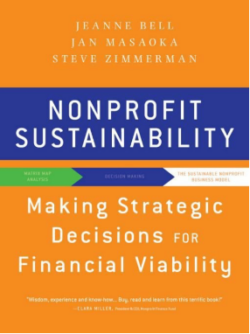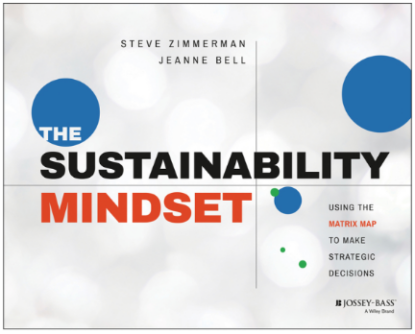The Spectrum Nonprofit Services founder and author talks to Michael E. Hartmann about his career and clientele, strategic plans and business plans as “a luxury,” and the proper relationship between donor influence on a nonprofit and its mission.
Steve Zimmerman founded Spectrum Nonprofit Services, a management consulting firm for nonprofit organizations, in Milwaukee in 2007. With a Yale M.B.A. and experience from working at community-based nonprofit groups as a director of development, chief financial officer, and associate director, he has helped hundreds of nonprofits around the country better sustain their financial viability in order to maximize the impact they have in pursuing their missions.
Zimmerman is co-author, with Jeanne Bell and Jan Masaoka, of 2010’s Nonprofit Sustainability: Making Strategic Decisions for Financial Viability and, with Bell, 2014’s The Sustainability Mindset: Using the Matrix Map to Make Strategic Decisions.
His experience with leading some and then helping so many other nonprofits facing familiar or unique challenges is wide, and his knowledge of various ways in which to try doing so is deep. His is an open and analytic mind, matched with a welcoming, consensus-building nature.
Zimmerman was kind enough to join me for a conversation last week. The just more than 10-minute video below is the first of two parts of our discussion; the second is here. In the first part, we talk about his career and clientele, strategic plans and business plans as “a luxury,” and the proper relationship between donor influence on a nonprofit and its mission.
Zimmerman and Hartmann
“I’m the worst strategic-planning consultant in the world, because I don’t necessarily believe in strategic plans. Let’s face it: designing strategy is the easy part, implementing is the hard part,” Zimmerman tells me. “I actually really believe in ‘strategic doing.’
“I think you learn a lot from implementation,” he continues.
That means having kind of some shared understanding of what’s driving the organization. What’s the impact you want to have? What’s your revenue strategy to get the resources to make it happen? And who are the people that you need? And how are you listening to your constituents in that process? … Having a business plan is a luxury.
Oversimplifiedly asked “If the mission changes because of a donor, is that good or bad?,” Zimmerman answers: “I would say that’s bad.
“When I think about the nonprofit sector and what I love about the nonprofit sector,” he goes on, is that
it’s groups of people from the community coming together to strengthen and better their community. So that needs to be the group that decides what the mission is and how you deliver it. And hopefully, they’re reflective of the people that they’re serving, and they are inclusive …. [I]t should never be an individual or an institution that is pushing the mission to change.
Any nonprofit is a business, according to Zimmerman. “You need to listen to the market and if you have this amazing idea that no one’s willing to fund, nobody’s willing to buy into, and you’re unwilling to change, maybe it isn’t that amazing an idea, right? Or maybe you need to find someone else, to convince others” to fund it.
“Organizations have the right to state their mission and to accomplish it in any way they want, and funders have the right to either use their money to fund that or not,” he says. “And part of leadership, running any business, is being able to find where those two circles overlap.”
In the conversation’s second part, Zimmerman talks about nonprofit sustainability as an orientation and not a destination, and the states of nonprofitdom overall and philanthropy in particular.




